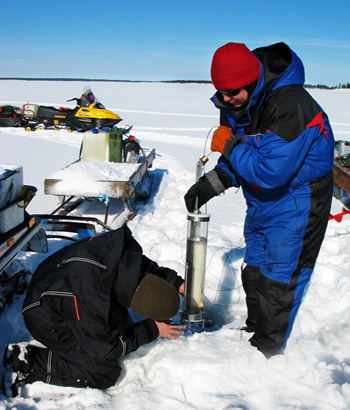Monitoring Programme
Monitoring of aquatic environments

POPs |
Chalcophile elements combine readily with sulfur (sulfides) instead of oxygen (oxides).
Chalcophile elements include mercury, cadmium, arsenic lead and zinc, among others.Implementation Guidelines State of the Environment in the Norwegian, Finnish and Russian Border Area Environmental Monitoring Programme for Aquatic Ecosystems in the Norwegian, Finnish and Russian Border Area – Updated Implementation Guidelines Environmental Challenges in the Norwegian, Finnish and Russian Border Area Pasvik Water Quality Report Pasvik Water Quality until 2013
Image: Esko Jaskari
